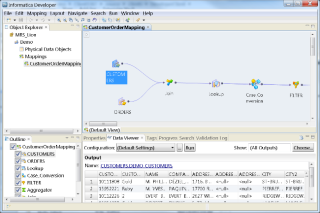ZPanel y Sentora en CentOS 6 x64

ZPanel, un panel de control de alojamiento web popular, se bifurcó en 2014 a un nuevo proyecto llamado Sentora. Aprende a instalar Sentora en tu servidor con este tutorial.
RTMP is great for serving live content. When RTMP is paired with FFmpeg, streams can be converted into various qualities. Vultr is great for these applications as they provide fast and dedicated CPU performance. Vultr’s global network also ensures that you can deliver high-quality live content with minimal delay. Let's get started!
Install the tools required to compile Nginx and Nginx-RTMP from source.
sudo yum install pcre pcre-devel openssl openssl-devel zlib zlib-devel -y
Make a working directory and switch to it.
mkdir ~/working
cd ~/working
Download the Nginx and Nginx-RTMP sources.
wget http://nginx.org/download/nginx-1.9.7.tar.gz
wget https://github.com/arut/nginx-rtmp-module/archive/master.zip
Install the unzip package.
sudo yum install unzip
Extract the Nginx and Nginx-RTMP source.
tar -xvf nginx-1.9.7.tar.gz
unzip v1.2.1.zip
Switch to the Nginx directory.
cd nginx-1.9.7
Add modules to compile into Nginx. Nginx-RTMP is included.
./configure --add-module=../nginx-rtmp-module-1.2.1/
Compile and install Nginx with Nginx-RTMP.
make
sudo make install
Create a SystemD unit file for Nginx.
sudo nano /usr/lib/systemd/system/nginx.service
Populate the file with the following content.
[Unit]
Description=nginx - high performance web server
Documentation=https://nginx.org/en/docs/
After=network-online.target remote-fs.target nss-lookup.target
Wants=network-online.target
[Service]
Type=forking
PIDFile=/var/run/nginx.pid
ExecStartPre=/usr/sbin/nginx -t -c /etc/nginx/nginx.conf
ExecStart=/usr/sbin/nginx -c /etc/nginx/nginx.conf
ExecReload=/bin/kill -s HUP $MAINPID
ExecStop=/bin/kill -s TERM $MAINPID
[Install]
WantedBy=multi-user.target
Start and enable the Nginx service.
sudo systemctl start nginx.service
Tell SystemD to start Nginx services automatically at boot.
systemctl enable nginx.service
Install epel-release and update the system.
sudo yum install epel-release -y
sudo yum update -y
sudo shutdown -r now
Install the Nux repository.
sudo rpm --import http://li.nux.ro/download/nux/RPM-GPG-KEY-nux.ro
sudo rpm -Uvh http://li.nux.ro/download/nux/dextop/el7/x86_64/nux-dextop-release-0-5.el7.nux.noarch.rpm
Install FFmpeg and its development packages.
sudo yum install ffmpeg ffmpeg-devel -y
Open the Nginx configuration file.
sudo nano /usr/local/nginx/conf/nginx.conf
Append the following to the configuration.
rtmp {
server {
listen 1935;
chunk_size 4096;
application live {
live on;
record off;
exec ffmpeg -i rtmp://localhost/live/$name -threads 1 -c:v libx264 -profile:v baseline -b:v 350K -s 640x360 -f flv -c:a aac -ac 1 -strict -2 -b:a 56k rtmp://localhost/live360p/$name;
}
application live360p {
live on;
record off;
}
}
}
After you've added that configuration text, you can customize settings such a video bitrate, audio bitrate, and resolution. These changes will only be applied to the lower quality stream. To add more qualities, copy and paste the exec FFmpeg line and change the settings. You'll also need to create a new application. You can do this by copying and pasting the live360 example that has been included. Don't forget to update the exec FFmpeg line with the address of the new application. You can do this by changing the final RTMP address in the exec FFmpeg line.
Note: Changing the value after -b:v will change the video bitrate. This is measured in kilobits per second. Changing the value after -b:a will change the audio bitrate. This is measured in kilobits per second. Changing the value after -s will change the resolution.
Save the file by pressing CTRL + X.
Restart Nginx.
sudo service nginx restart
Note: For best performance, each stream being converted should have its own CPU core. For example, if two qualities, 360P and 480P, are being created from a 720P stream, a Vultr instance with at least two CPU cores should be used.
If you're using a firewall, you'll need to make sure TCP 1935 is allowed.
The current configuration allows anyone to stream to your server. We can fix this by only giving certain IP addresses the publish permission. Open the Nginx configuration.
sudo nano /usr/local/nginx/conf/nginx.conf
Look for the following lines.
live on;
record off;
Add the following to each set of the above lines. Change 0.0.0.0 to your actual IP address.
allow publish 127.0.0.1;
allow publish 0.0.0.0;
deny publish all;
The configuration will now look something like the following.
rtmp {
server {
listen 1935;
chunk_size 4096;
application live {
live on;
record off;
allow publish 127.0.0.1;
allow publish 0.0.0.0;
deny publish all;
exec ffmpeg -i rtmp://localhost/live/$name -threads 1 -c:v libx264 -profile:v baseline -b:v 350K -s 640x360 -f flv -c:a aac -ac 1 -strict -2 -b:a 56k rtmp://localhost/live360p/$name;
}
application live360p {
live on;
record off;
allow publish 127.0.0.1;
allow publish 0.0.0.0;
deny publish all;
}
}
}
Save the file by pressing CTRL + X.
Restart Nginx.
sudo service nginx restart
Streaming applications typically have two fields for connection information. The first field is usually for the server information and the second field is usually for the stream name or key. The information that you should place into each field is listed. The stream name or key can be set to anything.
Field 1: rtmp://your.vultr.ip/live/
Field 2: stream-key-you-set
To view the streams, open the following links in a player supporting RTMP.
rtmp://your.vultr.ip/live/stream-key-you-set
rtmp://your.vultr.ip/live360p/stream-key-you-set
ZPanel, un panel de control de alojamiento web popular, se bifurcó en 2014 a un nuevo proyecto llamado Sentora. Aprende a instalar Sentora en tu servidor con este tutorial.
Aprende cómo instalar Vtiger CRM, una aplicación de gestión de relaciones con el cliente, en CentOS 7 para aumentar tus ventas y mejorar el servicio al cliente.
¿Usando un sistema diferente? MODX Revolution es un sistema de gestión de contenido (CMS) de nivel empresarial rápido, flexible, escalable, gratuito y de código abierto escrito i
Vultr le ofrece una increíble conectividad de red privada para servidores que se ejecutan en la misma ubicación. Pero a veces quieres dos servidores en diferentes países.
Using a Different System? Introduction CyberPanel is one of the first control panels on the market that is both open source and uses OpenLiteSpeed. What thi
Using a Different System? ESpeak can generate text-to-speech (TTS) audio files. These can be useful for many reasons, such as creating your own Turin
¿Usando un sistema diferente? Thelia es una herramienta de código abierto para crear sitios web de comercio electrónico y administrar contenido en línea, escrito en PHP. Código fuente de Thelia i
¿Usando un sistema diferente? LibreNMS es un completo sistema de monitoreo de red de código abierto. Utiliza SNMP para obtener los datos de diferentes dispositivos. Una variedad
Cacti es una herramienta de gráficos y monitoreo de red de código abierto y libre escrita en PHP. Con la ayuda de RRDtool (herramienta de base de datos Round-Robin), Cacti se puede usar t
Usar un usuario sudo para acceder a un servidor y ejecutar comandos a nivel raíz es una práctica muy común entre Linux y Unix Systems Administrator. El uso de un sud
¿Usando un sistema diferente? Zabbix es un software gratuito y de código abierto listo para empresas que se utiliza para monitorear la disponibilidad de sistemas y componentes de red.
MODX es un sistema de gestión de contenido gratuito y de código abierto escrito en PHP. Utiliza MySQL o MariaDB para almacenar su base de datos. MODX está diseñado para el negocio i
YOURLS (Your Own URL Shortener) es una aplicación de análisis de datos y acortamiento de URL de código abierto. En este artículo, cubriremos el proceso de instalación
LimeSurvey es una herramienta de encuestas en línea gratuita y de código abierto que se utiliza ampliamente para publicar encuestas en línea y para recopilar comentarios de encuestas. En este artículo, voy a
¿Usando un sistema diferente? Vanilla forum es una aplicación de foro de código abierto escrita en PHP. Es totalmente personalizable, fácil de usar y admite dispositivos externos.
¿Usando un sistema diferente? Netdata es una estrella en ascenso en el campo del monitoreo de métricas del sistema en tiempo real. En comparación con otras herramientas del mismo tipo, Netdata:
En este tutorial, aprende bien cómo configurar un servidor multijugador Just Cause 2. Requisitos previos Asegúrese de que el sistema esté completamente actualizado antes de comenzar
¿Usando un sistema diferente? En este tutorial, explicaré cómo configurar un servidor Starbound en CentOS 7. Requisitos previos Necesitas tener este juego contigo
ZNC es un enlace IRC gratuito y de código abierto que permanece permanentemente conectado a una red para que los clientes puedan recibir mensajes enviados mientras están desconectados. Thi
ZPanel, un panel de control de alojamiento web popular, se bifurcó en 2014 a un nuevo proyecto llamado Sentora. Aprende a instalar Sentora en tu servidor con este tutorial.
Aprende cómo instalar Vtiger CRM, una aplicación de gestión de relaciones con el cliente, en CentOS 7 para aumentar tus ventas y mejorar el servicio al cliente.
Esta guía completa le mostrará cómo configurar un servidor Counter-Strike 1.6 en Linux, optimizando el rendimiento y la seguridad para el mejor juego. Aprende los pasos más recientes aquí.
Los ataques de ransomware van en aumento, pero ¿puede la IA ayudar a lidiar con el último virus informático? ¿Es la IA la respuesta? Lea aquí, sepa que la IA es una bendición o una perdición
ReactOS, un sistema operativo de código abierto y gratuito, está aquí con la última versión. ¿Puede satisfacer las necesidades de los usuarios de Windows de hoy en día y acabar con Microsoft? Averigüemos más sobre este estilo antiguo, pero una experiencia de sistema operativo más nueva.
Whatsapp finalmente lanzó la aplicación de escritorio para usuarios de Mac y Windows. Ahora puede acceder a Whatsapp desde Windows o Mac fácilmente. Disponible para Windows 8+ y Mac OS 10.9+
Lea esto para saber cómo la Inteligencia Artificial se está volviendo popular entre las empresas de pequeña escala y cómo está aumentando las probabilidades de hacerlas crecer y dar ventaja a sus competidores.
Recientemente, Apple lanzó macOS Catalina 10.15.4, una actualización complementaria para solucionar problemas, pero parece que la actualización está causando más problemas que conducen al bloqueo de las máquinas Mac. Lee este artículo para obtener más información
13 Herramientas comerciales de extracción de datos de Big Data
Nuestra computadora almacena todos los datos de una manera organizada conocida como sistema de archivos de diario. Es un método eficiente que permite a la computadora buscar y mostrar archivos tan pronto como presiona buscar.





